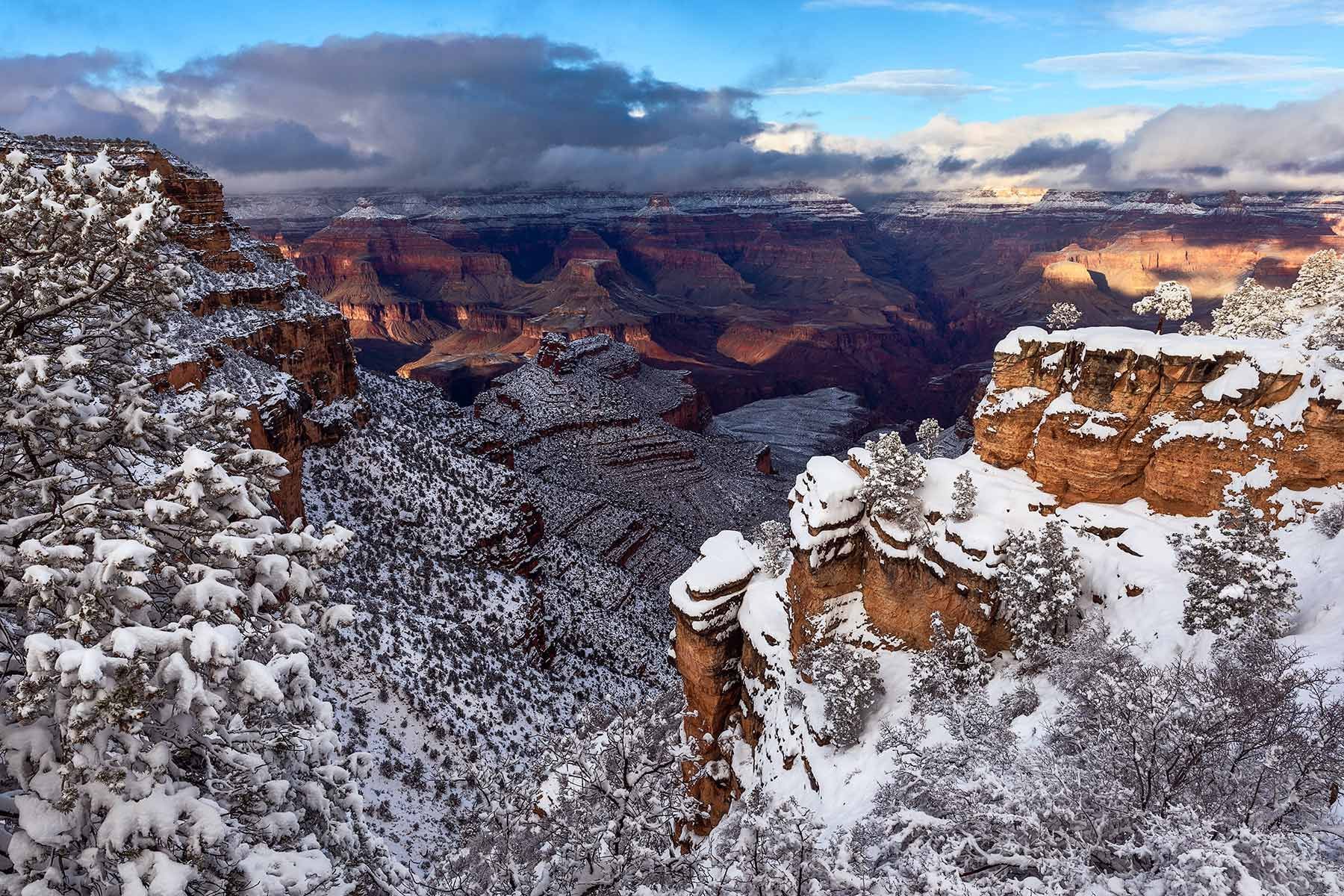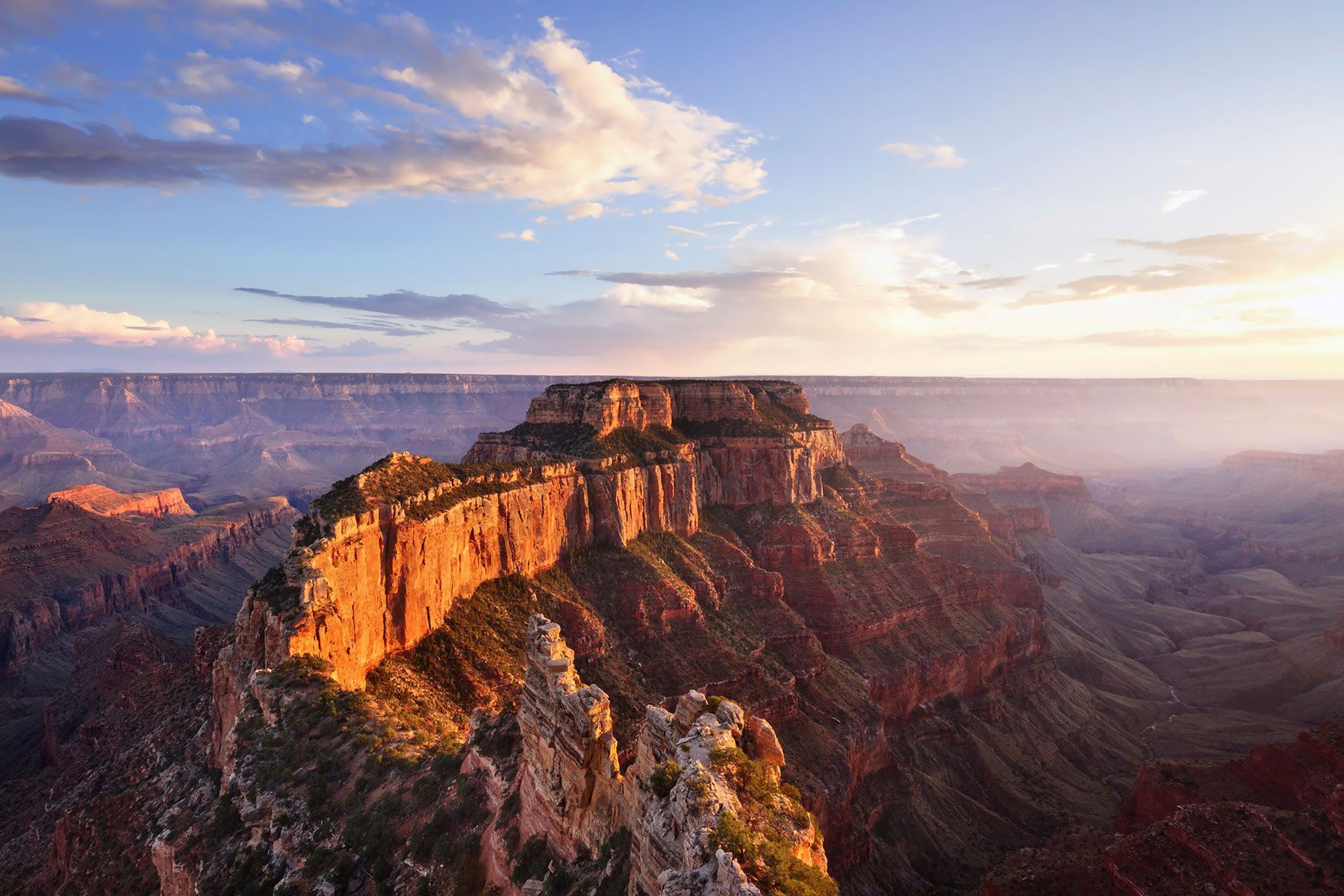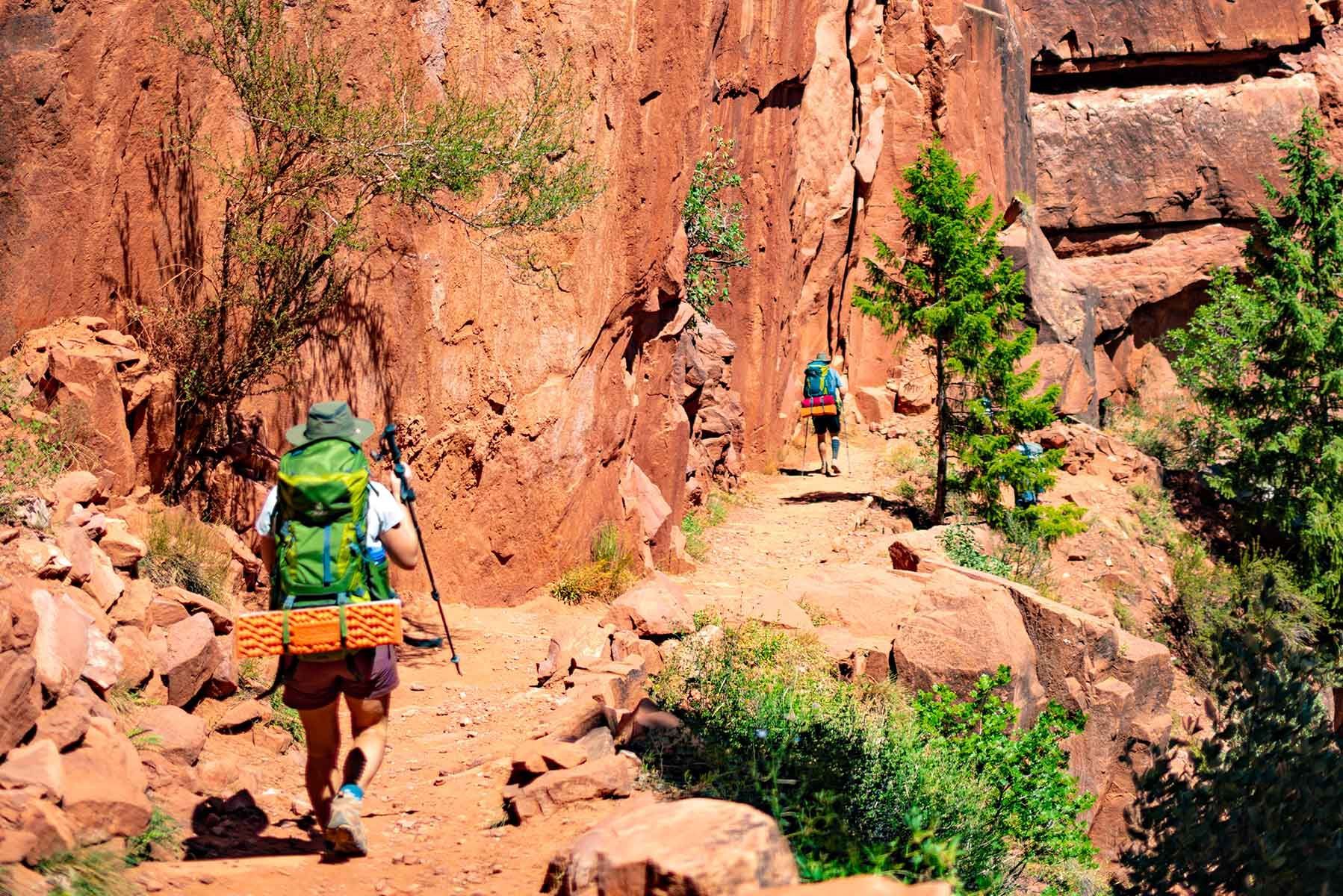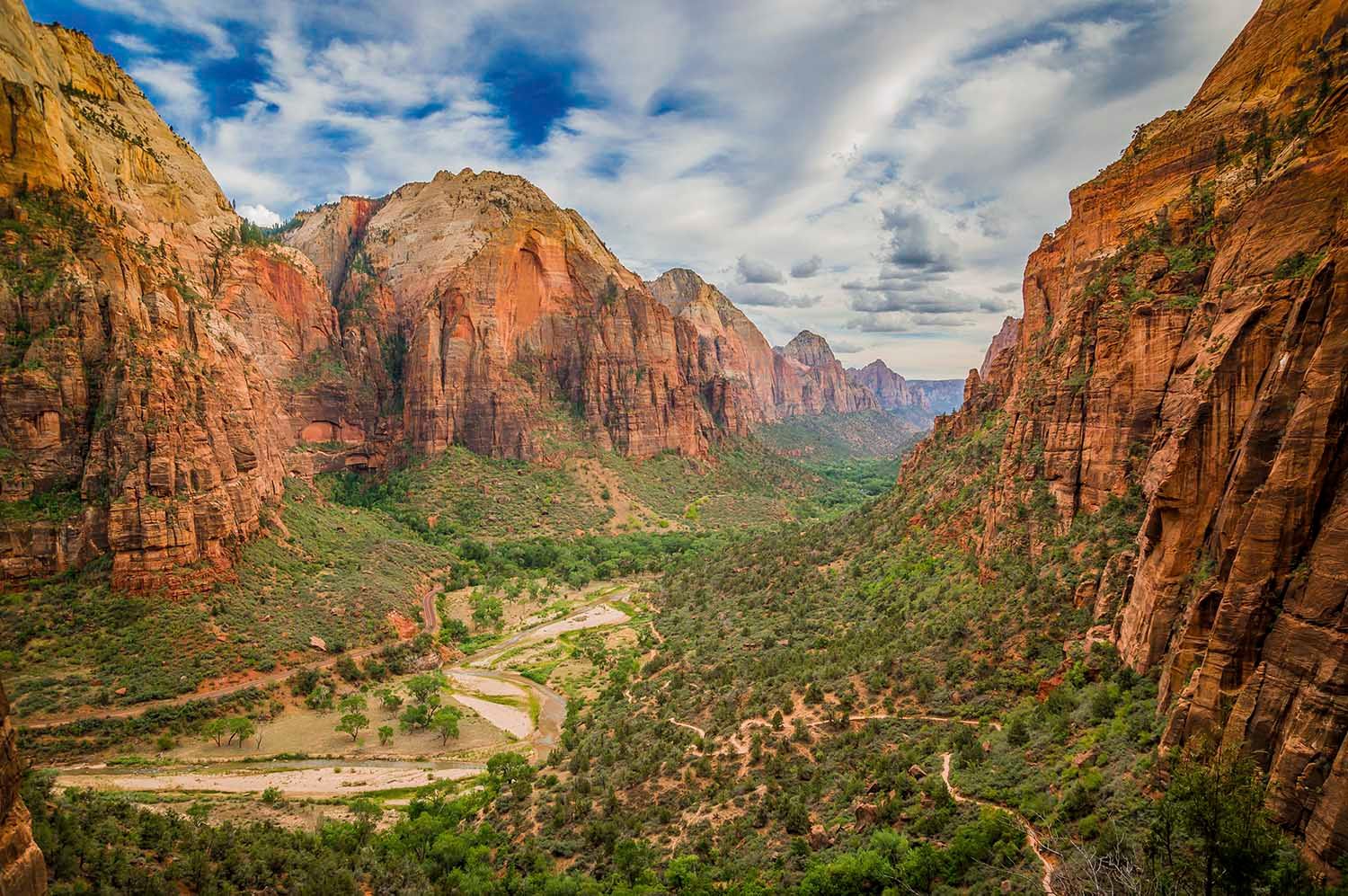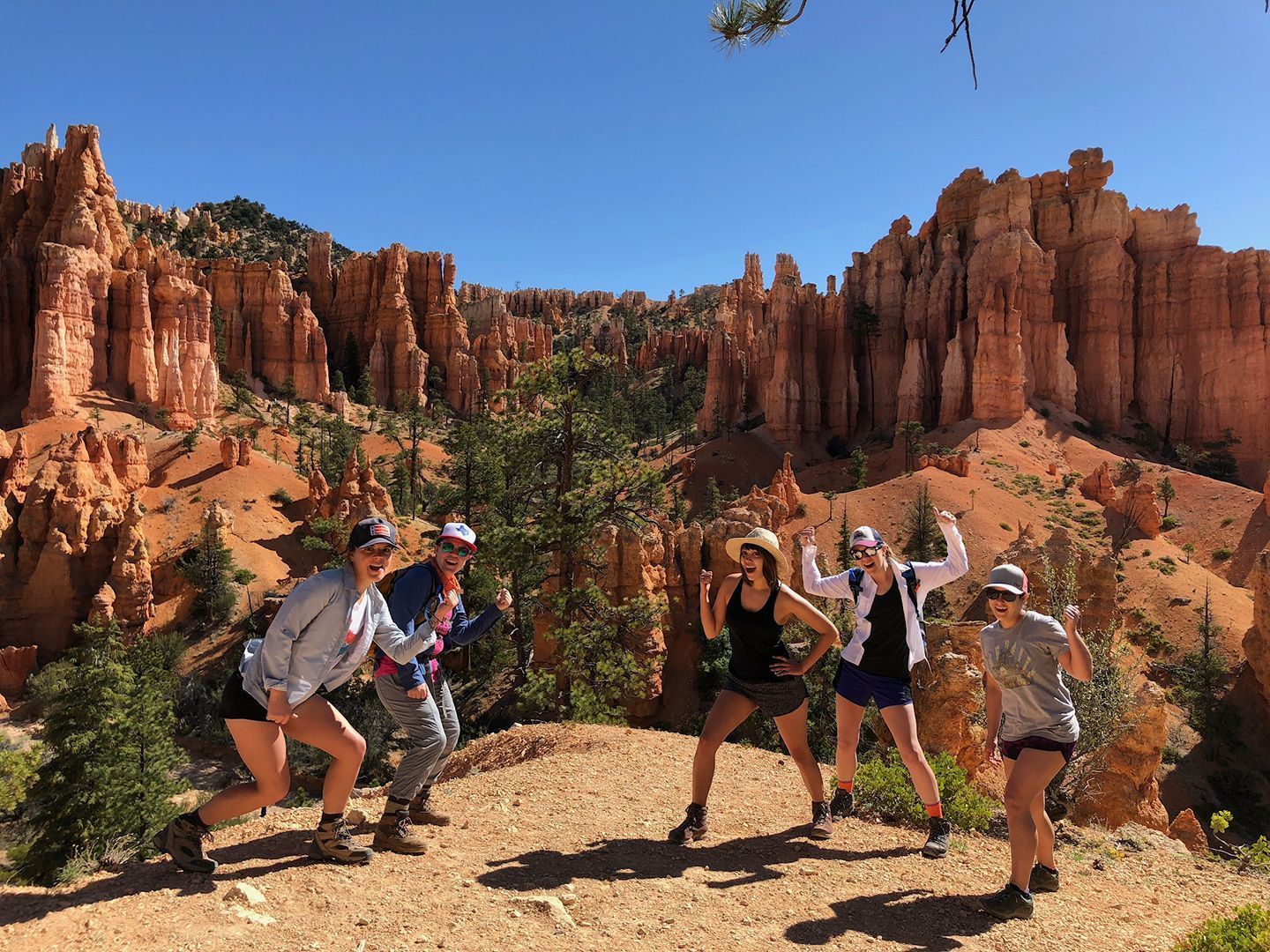A Backpacker’s First Aid Kit
The Second First Aid Kit
This is where you’re going to keep the items that would be necessary for handling more extensive injuries and serious medical emergencies. This can be kept buried in your backpack. If it actually becomes necessary to use these items, you’re likely dealing with an injury that will require stopping for a long time or potentially setting camp for the night:
Including these important items in your kit is a great start but make sure you know how to use them should they become necessary. There are many organizations offering wilderness first-aid and wilderness first responder classes that are both extremely informative but also lots of fun. You’ll learn how handle the most common hiking first aid kit contents
as well as many of the other items already in your backpack.
For any extended backcountry trips, consider adding first aid kit lightweight supplies, a first aid kit ultralight, or even a first aid kit portable for convenience. If you want to cover first aid kit essentials survival or create a diy first aid kit for
hiking, planning ahead is essential. A first aid kit
backpacking essentials checklist will ensure nothing is forgotten, from bandages to a first aid kit day hike for quick fixes.
Finally, for any extended backcountry trip into remote areas, you might consider buying or renting an emergency communication device such as a satellite phone or location device. Most backcountry areas have no cell phone reception, so the ability to contact emergency response systems can offer unparalleled peace of mind.
Key Takeaways
- Always carry two first aid kits — a compact
day hike first aid kit for minor injuries and a larger
backcountry medical kit for serious emergencies to stay prepared in any situation.
- Include and know how to use essential items like bandages, gauze, blister care products, antiseptics, and blood-clotting pads — they’re core to any
first aid kit hiking setup.
- Take a wilderness first aid or responder course to gain hands-on confidence in using your
backpacking first aid kit effectively during real outdoor emergencies.
- Don’t forget communication gear — satellite phones or emergency locator devices are vital for
backcountry trips where cell service is unavailable.
- Plan smart, not just light — a well-stocked
first aid kit backpacking essentials checklist ensures your safety so you can focus on enjoying the wilderness experience.
For peace of mind, join a guided backpacking tour with expert-led services like
Four Season Guides, which handle logistics, safety, and medical readiness for a worry-free adventure.
Planning a backpacking vacation to escape the ‘real world’ for a few days? Sounds like a fantastic idea! Getting away from it all and losing yourself in the wilderness (not literally, of course) is a fabulous way to reenergize, reduce stress, and get some well-deserved exercise. You can simplify your life and disappear for a while with just the bare essentials on your back, exploring America’s most beautiful landscapes.
But make sure those bare essentials include a few that could save your butt should you injure yourself along the way. A well-prepared day hike first aid kit and a larger backcountry medical kit are indispensable for any adventure.
Whether you’re heading out for a quick weekend or a week-long expedition, these items should be in every comprehensive first aid kit hiking. It’s actually a good idea to have 2 kits: a small kit for quick fixes on the trail and a larger one for more serious injuries, like an expedition first aid kit or hiking 1st aid kit.
The ‘First’ First Aid Kit
This will be a small kit that is kept easily accessible in your pack so that it’s handy for quick fixes. Simple cuts, scrapes, blisters, and splinters are all too common on any hike. Keep the following items ready at a moment’s notice:
- Nitrile gloves – protect yourself from bodily fluids if tending to someone else’s injury. Your safety and protection is ALWAYS your number one priority.
- Blister care products – mole skin, blister band-aids, duct tape for blisters, and duct tape and blisters protection.
- Small backpackers first aid kit
- Bandaids – multiple sizes and shapes, consider waterproof types
- Ace wrap & athletic tape – for mild to moderate ankle injuries
- Alcohol wipes and antibiotic ointment – for cleaning and promoting healing
- Irrigation syringe – great for getting dirt and grit out of scrapes and cuts
- Tweezers, nail clippers, trauma shears (very handy scissors), safety pins
- Small ziplock bags – perfect for containing contaminated trash
All of these items should fit nicely in a small, compact backpacker first aid kit. Keep it in a gallon-size ziplock bag to keep it waterproof. This small kit can serve as your first aid kit hiking emergency solution on short treks.
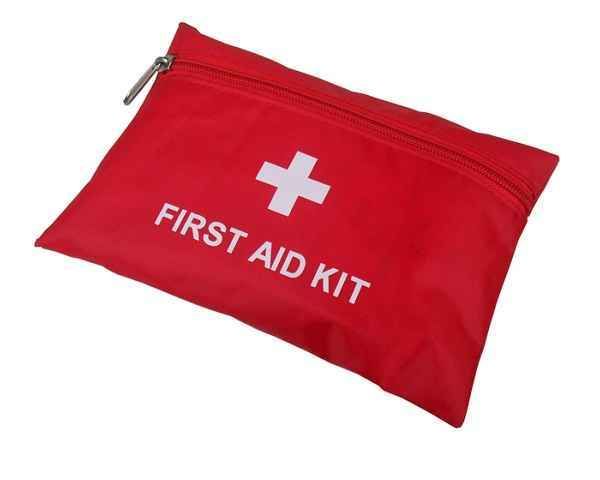
- Quik Clot® or similar- blood clotting sponges, for serious bleeding
- Sterile gauze pads- multiple sizes, for covering and cleaning large scrapes, cuts
- Trauma pads
- Second skin- for burns
- Triangular bandages- for sling & swath for arm injuries,dislocations
- Butterfly strips
- Tincture of Benzoine- helps bandages stick around wounds
- Medications- ibuprofen, acetominophen, antihistomine, aspirin, anti-diarrheal
- thermometer
- CPR mask
- Extra ace wrap, bandaids, athletic tape, duct tape on boots, duct tape boots, duct tape feet, duct tape for feet, alcohol wipes
- Pencil & paper- for taking notes and recording patient vital signs
- First aid kit backpack
- Wilderness medicine handbook
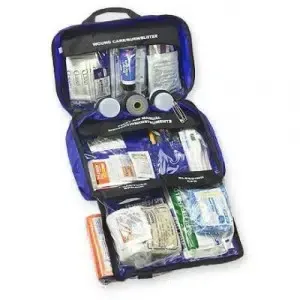
Frequently Asked Questions
Learn how to pack and use a backpacker’s first aid kit to stay safe and prepared during any hiking or wilderness adventure.
What should a backpacker’s first aid kit include?
A backpacker’s first aid kit should include essentials like bandages, blister care, gauze pads, antiseptic wipes, tape, pain relievers, and tweezers. For longer trips, add trauma supplies like QuikClot, triangular bandages, and a CPR mask. Always carry both a small trail kit and a more comprehensive backcountry kit.
Why have two first aid kits for backpacking?
Carrying two kits—a small, quick-access one and a larger, more complete kit—lets you handle both minor injuries and serious emergencies. The smaller kit is for cuts, blisters, and scrapes on the trail, while the larger kit contains supplies for bleeding, fractures, or burns that may require you to stop and rest.
How do I organize my first aid kit for hiking?
Keep frequently used items like bandages and blister pads in an accessible outer pocket. Pack heavier or less-used items, such as trauma pads or medications, deeper in your backpack. Store everything in waterproof bags and label compartments so you can quickly find what you need in an emergency.
What’s the difference between a day hike kit and a backcountry kit?
A day hike kit focuses on minor injuries and lightweight essentials—bandages, antiseptic, and pain relief—while a backcountry kit adds more advanced items like gauze rolls, splints, burn care, and clotting agents. Backcountry kits prepare you for situations where medical help isn’t immediately available.
How can I prevent blisters while hiking?
Wear moisture-wicking socks, properly fitted hiking boots, and treat hot spots early with moleskin or blister bandages. Keep blister care items handy, and use duct tape as a quick fix. Staying proactive prevents minor foot irritation from becoming a painful trip-ending issue.
Should I take a wilderness first aid course?
Yes. A wilderness first aid or first responder course teaches you how to assess and treat injuries in remote areas, where medical help may be hours away. You’ll gain hands-on experience using your gear and learn how to stay calm and effective during emergencies.
What medications should I bring on a backpacking trip?
Pack common over-the-counter medications like ibuprofen, acetaminophen, antihistamines, aspirin, and anti-diarrheal tablets. Adjust for personal needs, allergies, or prescriptions. Always store medicines in waterproof containers and check expiration dates before each trip.
How can I communicate during an emergency in remote areas?
Since most wilderness areas lack cell service, carry an emergency communication device such as a satellite phone or personal locator beacon. These devices can connect you to rescue services or send your location when you can’t reach help otherwise.
How do I keep my first aid kit lightweight?
Choose compact, multi-use items—duct tape instead of bulky wraps, small gauze pads, and single-dose medication packets. Repackage bulky supplies into smaller containers, and leave behind duplicates. Lightweight kits reduce pack weight while keeping critical essentials at hand.
Why hire a professional backpacking guide service?
Guided trips provide safety, structure, and expert support. Guides carry medical kits, know wilderness first aid, and handle logistics like food and gear. This lets you focus on the experience while knowing professionals are prepared for any situation.
FS Guides Makes Backpacking Safer and Simpler
Does all of this sound a little overwhelming? If you’d love go on a backpacking vacation but are not ready to take it on by yourself, consider hiring a backpacking guide service. Our guided backpacking trips make it easy to explore safely and confidently. They provide all the gear, food, logistical planning, and their experienced guides are more than competent to handle any situation that presents itself in the wilderness. For your next Grand Canyon hiking tour, Yosemite backpacking tour, or Utah hiking adventure, contact the pros at Four Season Guides for the adventure of a lifetime!
Still deciding? Explore our
Google Business Profile Reviews to see why guests love FS Guides’ all-women’s adventures, basecamp experiences, and hiking and yoga retreats.
Four Season Guides, 506 N Grant St suite o, Flagstaff, AZ 86004, United States
+19285251552
35.19653980, -111.62000560

